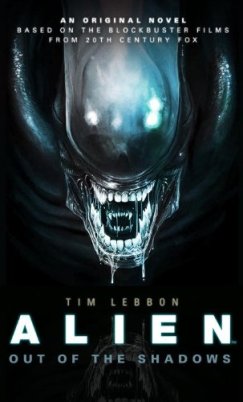“In the darkness of a vast cave system, cut off from the world for millennia, blind creatures hunt by sound. Then there is light, there are voices, and they feed… Swarming from their prison, they multiply and thrive. To scream, even to whisper, is to summon death.
Deaf for many years, Ally knows how to live in silence. Now, it is her family’s only chance of survival. To leave their home, to shun others, to find a remote haven where they can sit out the plague. But will it ever end? And what kind of world will be left?” As a general fan of the world ending in some spectacularly macabre fashion, this blurb really piqued my interest. Tim Lebbon is a proven scribe for horror thrillers, and I discovered that “The Silence” manages to avoid re-treading beaten apocalyptic paths to present a tight and exciting read.
As a general fan of the world ending in some spectacularly macabre fashion, this blurb really piqued my interest. Tim Lebbon is a proven scribe for horror thrillers, and I discovered that “The Silence” manages to avoid re-treading beaten apocalyptic paths to present a tight and exciting read.
Here, armageddon is born from a network of ancient Moldovan caves. An undiscovered species is accidentally unleashed – a carnivorous swarm of bat-like horrors named “vesps” – which multiply with insectile efficiency and spread through Eastern Europe, leaving carnage in their wake.
The main characters are Ally, a sensible 14-year-old deaf girl, and her father Huw. They live a normal existence in Monmouthshire, England, with the rest of their family and it’s through them that we follow the plague. Being interested in science, the initial televised event catches Ally’s eye, but the tone soon shifts from excited anticipation to terror.
I love the pre-apocalypse sections of novels such as this – the good old rollercoaster chain-lift – and Tim Lebbon has created a delightfully ominous climb. The atmosphere of impending doom is superb, beginning as minor news to the English media, far overseas and surely nothing to worry about. But Ally is perturbed right from the start and her father also displays an intuitive acknowledgement of the threat. As readers, we already know hell is en route. So when Huw, away on business, drops everything and heads back to his family, it puts him firmly in our camp.
There are some chilling moments just before chaos descends, such as one memorable scene in which Huw stops at a service station whilst travelling home. A stark contrast is drawn between the bustling commuters and bickering families going about their evening, and those who have realised just how serious this problem is. They stare at their smartphones, stricken in realisation that these faraway, unbelievable events are rapidly hitting closer to home. It’s beautifully written and cinematic, subtly perched right on that awful cusp of normality and catastrophe.
Even as the panic escalates, there are still those who don’t quite understand – or refuse to acknowledge – what’s coming, such as opportunistic shopkeepers who triple their prices as people stockpile. The story nods to our greed and instinct for selfish survival – both commercial and violent – but tinges this with sadness. I like it that the author neither excuses nor condemns the varying reactions born of fear.
People soon realise that because they evolved underground, vesps are blind, so they only way to survive is complete silence. With them coming inexorably closer, Ally and family abandon their heavily-populated town and embark towards an old holiday home in rural Scotland. This build-up comprises a healthy portion of the book, and while some might be impatient for the “kick-off”, I found the menace so expertly cranked that it didn’t outstay its welcome for a moment. When the vesps do finally arrive in a blaze of leathery wings and teeth, the novel also delivers on its promise of horror and exhilaration.
Ally’s brother, mum and gran provide solid supporting roles, as does her pet dog, but the focus is on father and daughter. Huw is a flawed and stubborn chap, but a good dad and a strong believer in the sanctity of life. Ally is a likeable kid: pragmatic and perceptive for her age. She’s an astute observer of human expressions and intent, partly due to her condition, and well equipped for a silent world.
The family have an advantage by being able to use sign language, but this is unfortunately something that makes Ally a valuable asset to certain people. Yes, it’s not just the vesps that we need to worry about and at times, they become secondary to the criminal and unhinged elements drifting through the apocalypse. I like the way the characters evolve, learning to live in the vesp-infested world so that it almost becomes normal, and then moving on to worrying about other things.
There are plenty of moving moments and horrific sacrifices to be made, but the gore is not excessive. It’s a strong emotional core that holds the book together and although a thriller to some degree, it’s not of the white-knuckle variety and focuses more on humanity.
Silence is a great, simple hook for survival. The government announcement that “pets must be silenced” – a nice euphemism for killed – gave me a chill, and this also affects people’s willingness to help strangers. What if they don’t keep quiet, or can’t due to injury or distress? What would you do with a screaming baby as the vesps closed in?
Less usual for an apocalyptic tale, social media becomes the chief means of communication for much of the book. I liked this contemporary element, and the author doesn’t miss a trick. As Ally is very tech-savvy, she becomes the information gatherer for her family, and the internet is an essential but grim place. As well as advice and survival tips, it’s awash with cell-phone clips of burning cities, tweets by people trapped and slowly dying in vesp-smothered cars, youtube suicides…
As time progresses, the world starts falling to the Grey: the time when power and communications wink out. This compounds the isolation of survivors, and there’s a brutal sense of finality about the power going off. It’s never coming back on. The digital world that filled our lives is dead. Adapt or die.
Overall, I had a great time with “The Silence” and it’s one of those novels that doesn’t let go between reading sessions. I had to nip to the local shop in the dark, and was conscious of rustling shadows, not to mention the excessive noise of my own footsteps. I did manage not to shush anybody though.
The story never gets bleak – there’s always hope – and it maintains pace without falling back on easy clichés. Throw in a splendid accumulation of peril, monsters both bestial and human, and this is a must for any connoisseur of the apocalypse.
Recommended.
